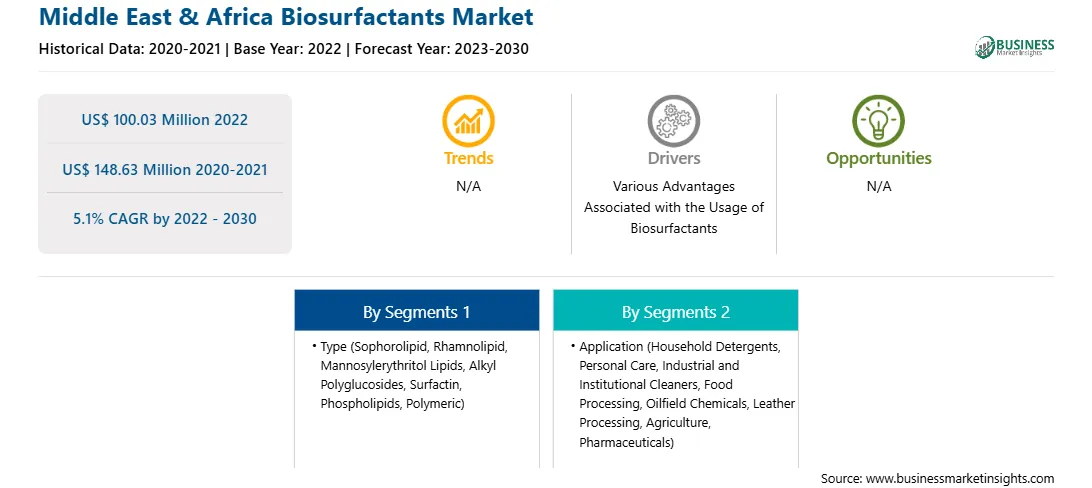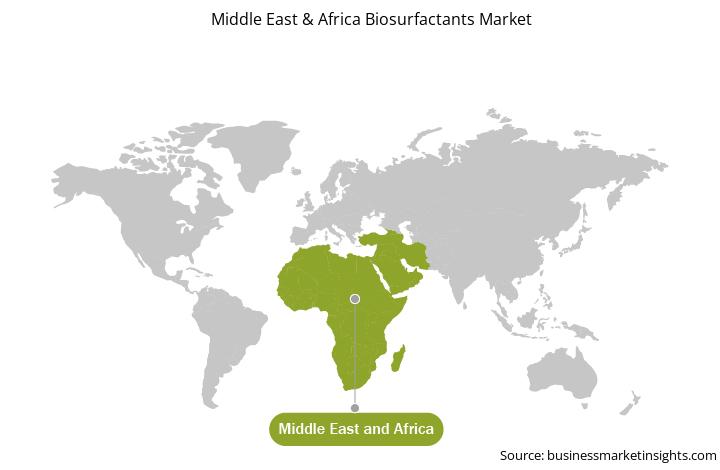Environmental sustainability has become an important developmental goal in recent years. Efforts are now being driven toward a biomass-based economy, as compared to the fossil fuel-based economy. Various economies focus on fulfilling sustainability goals by developing and using bio-based products partially or fully derived from renewable biological sources. The surfactants industry is focusing on making surfactants from bio-based sources. Various surfactants used in different industries are derived from petroleum sources and are resistant to biodegradation. In addition, toxic pollutants are generated during their synthesis, which are persistent and represent a significant environmental hazard. Therefore, the interest in green and sustainable biosurfactants is growing to overcome these limitations. Biosurfactants are produced by diverse microbes using various substrates from renewable sources such as industrial and agricultural waste materials. Biosurfactants are an alternative to chemically synthesized surfactants due to their diversified structures and biocompatibility properties. Biosurfactants are used in various industries due to their low toxicity and high biodegradability. Further, due to rising environmental concerns, various industries are using biosurfactants to develop bio-based products and contribute to the environment. Thus, the rising focus on developing bio-based products is projected to boost the Middle East & Africa biosurfactants market growth over the coming years.
Middle East & Africa biosurfactants market is segmented into South Africa, Saudi Arabia, the UAE, and the Rest of Middle East & Africa. The biosurfactants market in the Middle East & Africa is growing due to the increasing use of biosurfactants in various industries and the advantages associated with using biosurfactants. The demand for different personal care and cosmetics products is also growing due to increasing consumer spending and the strong growth of e-commerce platforms. Moreover, the demand for biobased cosmetics and personal care products is also gradually rising in the region. All these factors are driving the demand for biosurfactants. Further, people in the region demand less toxic and highly biodegradable products due to rising concern for the environment, driving the use of biosurfactants in detergent and cleaning products, food processing, and other applications.
The Middle East & Africa biosurfactants market is segmented into product type, application, and country.
Based on product type, the Middle East & Africa biosurfactants market is segmented into sphorolipid, rhamnolipid, mannosylerythritol lipids (MELs), alkyl polyglucosides (APGs), surfactin, phospholipids, polymeric and others. The sphorolipid segment registered the largest Middle East & Africa biosurfactants market share in 2022.
Based on application, the Middle East & Africa biosurfactants market is segmented into household detergents, personal care, industrial and institutional cleaners, food processing, oilfield chemicals, leather processing, agriculture, pharmaceuticals, and others. The household detergents segment held the largest market share in 2022.
Based on country, the Middle East & Africa biosurfactants market has been categorized into South Africa, the UAE, Saudi Arabia, and the Rest of Middle East & Africa. The Rest of Middle East & Africa dominated the Middle East & Africa biosurfactants market in 2022.
Allied Carbon Solutions Co Ltd, Saraya Co Ltd, Evonik Industries AG, BASF SE, Sabo SPA, Stepan Co, Deguan Biosurfactant Supplier, and Dow Inc are some of the leading companies operating in the biosurfactants market in the region.
Strategic insights for the Middle East & Africa Biosurfactants provides data-driven analysis of the industry landscape, including current trends, key players, and regional nuances. These insights offer actionable recommendations, enabling readers to differentiate themselves from competitors by identifying untapped segments or developing unique value propositions. Leveraging data analytics, these insights help industry players anticipate the market shifts, whether investors, manufacturers, or other stakeholders. A future-oriented perspective is essential, helping stakeholders anticipate market shifts and position themselves for long-term success in this dynamic region. Ultimately, effective strategic insights empower readers to make informed decisions that drive profitability and achieve their business objectives within the market.

| Report Attribute | Details |
|---|---|
| Market size in 2022 | US$ 100.03 Million |
| Market Size by 2030 | US$ 148.63 Million |
| CAGR (2022 - 2030) | 5.1% |
| Historical Data | 2020-2021 |
| Forecast period | 2023-2030 |
| Segments Covered |
By Type
|
| Regions and Countries Covered | Middle East and Africa
|
| Market leaders and key company profiles |
|
The geographic scope of the Middle East & Africa Biosurfactants refers to the specific areas in which a business operates and competes. Understanding local distinctions, such as diverse consumer preferences (e.g., demand for specific plug types or battery backup durations), varying economic conditions, and regulatory environments, is crucial for tailoring strategies to specific markets. Businesses can expand their reach by identifying underserved areas or adapting their offerings to meet local demands. A clear market focus allows for more effective resource allocation, targeted marketing campaigns, and better positioning against local competitors, ultimately driving growth in those targeted areas.

The Middle East & Africa Biosurfactants Market is valued at US$ 100.03 Million in 2022, it is projected to reach US$ 148.63 Million by 2030.
As per our report Middle East & Africa Biosurfactants Market, the market size is valued at US$ 100.03 Million in 2022, projecting it to reach US$ 148.63 Million by 2030. This translates to a CAGR of approximately 5.1% during the forecast period.
The Middle East & Africa Biosurfactants Market report typically cover these key segments-
The historic period, base year, and forecast period can vary slightly depending on the specific market research report. However, for the Middle East & Africa Biosurfactants Market report:
The Middle East & Africa Biosurfactants Market is populated by several key players, each contributing to its growth and innovation. Some of the major players include:
The Middle East & Africa Biosurfactants Market report is valuable for diverse stakeholders, including:
Essentially, anyone involved in or considering involvement in the Middle East & Africa Biosurfactants Market value chain can benefit from the information contained in a comprehensive market report.